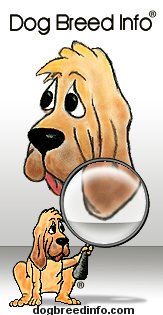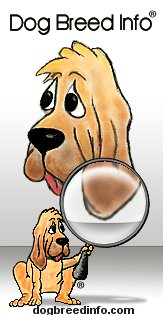How Much Should I Feed My Dog?

DogLicious says: "I love to just eat and eat and eat and eat!"
Do you follow the feeding guidelines on the dog food label?
You need to have a certain amount of skepticism when reading dog food feeding guidelines because...
First: there is usually a wide range of recommended quantities to feed a dog.
Second: determining a quantity to be fed based on the weight of the dog is an extremely inaccurate way of feeding.
Third: there is little consistency between the various brands that are in the recommended quantities to be fed.
It is little wonder consumers are often confused about how much to feed their dog.
As a "general" rule, the recommended amount on your dog food label or bag is rarely the actual amount that you should be feeding a dog, but instead should be considered a rough starting point. Your dog's age, activity level, health, reproductive status, and even the climate where you live can influence the amount of food your dog should receive.
Where should I start?
Start with basic pet nutrition and purchase a pet food measure. You can get one at any pet store or simply use a common kitchen measuring cup. Take a test by putting the amount of food you would normally give your dog into a bowl - then measure it. Compare that to the guidelines on your dog food bag and it most likely is much higher. Just like portion control is a key component in human body fitness, it is also a significant part of canine health.
You should also keep in mind that the quality of the foods you're feeding a dog can vary greatly. The nutritional value in each food can be quite different so, it's important to make certain your dog is getting the right amount of the nutrients it needs for optimal
health. Visit our page on dog nutrition to learn more
Calculating how many cups of food to be feeding a dog greatly depends on the dog food you use. If you scan through the pet foods in the store and look at the serving information on the label you'll notice that cheaper foods often advise giving an average fifty pound dog about 4 cups. The more costly products usually advise two cups.
This is based on dogs receiving the appropriate amount of daily nutritional value, which means that it requires double the amount of a cheaper product (with even cheaper ingredients) to meet the nutritional guidelines than it does a costlier brand. It can actually be expensive to buy cheap!
You don't have to be a mathematician to understand the cost of feeding a dog 4 cups cheaper food versus two cups of a more expensive food evens out, given the quantity of food your particular dog requires. It would certainly be worth your while to compare the different ingredients to see what benefits your dog.
Unfortunately, there's no firm rule about how many cups of food to feed based on the weight of a dog because of the great difference of nutritional values that exist in various dog foods.
Learn how to read dog food labels here...
How much should I "actually" feed my dog?
First be sure to choose a high-quality dog food and look at what the label's recommendations are. Most high-quality dog foods recommend approximately 1-1/2 cups per 20 pounds of body weight per day for the smaller breeds, since they require 15-25% more calories per pound than larger breeds. Large and giant breeds are more often fed 1 cup per 20-25 pounds and more proportionately for 25 pounds and up.
The following should be carefully considered, and then the amount of food adjusted proportionately :
*The actual calorie content of the food
*Your dog's weight. If you're unsure about an ideal weight for your dog, ask your vet.
*Your dog's level of activity.
*Other variables (climate, temperature)
*Any additional calories your dog may get from treats or table foods
Keep in mind, most dogs are overfed and under-exercised - so, if you're unsure in the beginning about how much to feed, it's always better to feed a little less and then increase in small amounts, as necessary.
Once you've begun to feed your dog an ideal amount of food, weigh your dog at least once a month to make sure you're going in the right direction. If needed, increase or decrease the quantities in small amounts until the dog stays at his ideal weight on a permanent basis.
*Remember, have fresh water available for your dog, at all times. This is especially critical during the summer months when it's hot and your dog can become dehydrated.
In Dogs We Trust"!

Dog Breed Info provides useful info on breeds, behavior, etc. and, they offer a section about feeding here http://www.dogbreedinfo.com/feeding.htm
Important Notice! Although we at Feeding A Dog are long time dog enthusiasts and dog advocates, we are not veterinarians or professional animal nutritionists. Our purpose is strictly to provide you with information, so that you can make your own decisions. Any and all of the information contained or stated on this web site and on our blog is provided for general information purposes. The information provided is not direct veterinary advice and should not be construed as such nor substituted for a consultation with a veterinarian or dog nutrition professional. Every dog and situation is different. If you have any concerns about your dog's health, please contact your veterinarian's office immediately. We all love our dogs and want only the very best food for them! "In Dogs We Trust"


